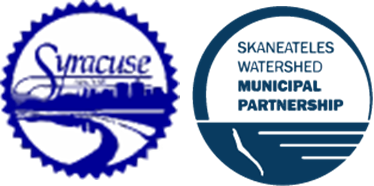We all play a role in protecting water quality. If you live in the Skaneateles Lake watershed and are interested in ways to help protect water quality, there are things you can do on your property, in your home, and your community that will benefit water quality, improve the environment, and even help save you money! Here are just a few ideas:
On your property
Inspect septic tank every 3 years and have it pumped every 5 years.
Regular maintenance of your septic tank is less costly than repairing a failed system.
Use less (or no) fertilizers on your lawn - always test soil first to determine application need.
Nutrients from fertilizer and a leaking septic system contribute to harmful algal blooms (HABs), degrade water quality and soil health, and pose health threats to humans, pets and wildlife.
Bigger, better riparian buffers along shorelines and streams.
Riparian means an area adjacent to a stream or lake. Buffers contain native trees and shrubs. Riparian buffers act as a barrier - their roots significantly slow runoff and reduce the amount of nutrient and sediment deposited. Above the surface, leaves slow the rate at which water is falling. Under the surface, roots keep soil in place and prevent erosion and pollution to nearby streams, tributaries, and lakes.
Naturalize lawns and shorelines: Keep your grass taller (less mowing too!), add more perennials, keep slopes gentle!
In its natural state, the shoreline area has a natural slope and native vegetation with roots that in its natural state is engineered to protect against erosion. Working against nature can have drastic negative impacts, like water quality issues and costly structural damage.
In Your Home
Conserve your water use! Turn off faucets when not in use, take shorter showers, use water collected from a rain barrel to wash your car, invest in water saving toilets and faucets.
Reducing the amount of water being flushed and entering drains reduces the stress on your septic system. This decreases the likelihood of a leak and failed system, reducing your contribution of nutrient loading to lake. If you have a private drinking water well, water conservation in your home can extend the life of the well. If you are on public water, this may also lower your water bill.
In your community
Prevent the spread of invasive species while you recreate outdoors.
While you boat or kayak: Follow the Clean, Drain, Dry protocol. Make sure your kayak or boat is clear of any vegetation before entering a body of water. Allow identified boat stewards to inspect your watercraft. Aquatic invasive species disrupt the aquatic ecosystems, degrade water quality, and can cause costly damage to watercrafts. While you hike or mountain bike: Look for the Hemlock Woolly Adelgid (HWA) infestations on hemlock trees and report observations. Make sure you don’t carry HWA (or any invasive species) from one location to another! Hemlock trees line the shores of many of the streams and lakes nearby, including Skaneateles Lake. Hemlock trees hold the shoreline in place, which prevents nutrient and sediment loading to the lake, and protects water quality. HWA kills hemlock trees, reducing the valuable ecosystem services these trees provide.
Share this knowledge and take action!
Attend CCE Onondaga and other organizations’ workshops, trainings, and volunteer events. Utilize agency and municipal resources and guidance. Water is a shared natural resource, and the efforts that go into protecting it must be shared among the community for the best results.
You can also check out other CCE Onondaga Skaneateles Lake resources, brochures and fact sheets for more information.
Also, check out other pages on this website on topics like:

